Enhancing Governance Capacity to Ensure a Long-Term Water Supply: The Case of Windhoek, Namibia
Abstract
:1. Introduction
1.1. Water Resources of Windhoek
1.2. Water Governance Challenges of Windhoek
1.3. The Challenges of Water Security in Windhoek
1.4. Aim of the Study
2. Methodology
2.1. Water Management Performance Assessment
2.2. Water Governance Assessment
3. Results
3.1. Trends and Pressures Framework
3.2. City Blueprint Framework
3.3. Governance Capacity Analysis
4. Discussion
4.1. Data Limitations
4.2. Trends and Pressures Framework
4.3. City Blueprint Framework
4.4. Governance Capacity Framework
4.4.1. Implementation Capacity
- Eurocentrism—The current and planned legislative frameworks do not work in the Namibian context, and this is either because they were created during the period of apartheid, that speak to a white minority, or because they are modelled on European systems (S12). The latter features stakeholder collaboration and widespread water availability that are not reflected in Windhoek’s context. Consequently, the policies that are promoted assure success in Europe but not in Namibia, or as a stakeholder defined it, “the policy is ahead of its times” (S12, S5). The traditional laws that embed water-saving principles are discarded in favour of modern legislation, which looks at the principles of city living including excessive water consumption. As a result, the legislative frameworks need to be re-formulated to better reflect the context in which they would be applied. This is expected to offset some of the implementation issues (S12, S5, S13).
- Accountability—A lack of accountability impacts the implementation and monitoring of policies (S5, S14, S13). When a water crisis occurs, it is blamed on climate change or an arid Namibian environment (S17): although these are to blame, this generates a reduced sense of initiative for dealing with the challenge. An integrated mandate for water management and clear division of responsibilities would enable individuals and institutions to be held accountable and to provide incentive to take action to ensure long-term security of water provision (S5, S18). At present, water management responsibilities are scattered over many departments, which leads to inertia and inaction. This means that Windhoek is incapable of preparing for crises in advance, rather it deals with these when they arise (S5, S8, S11). The changing conditions that continuous water depletion and climate change will bring will not be offset in this manner, compromising the long-term and sustainable water supply.
- Technical expertise—The level of technical expertise required to support policy implementation is lacking, especially at governance level (S15, S7, S8). There was a recent turnaround of young heads in institutions, which compromises the experience and capacity of fulfilling these positions (S5, S11). Although it is important to improve equality and representation, the impulsive way this is done results in experienced figures being unable to address the water security challenge. Added to this, multiple technical experts have migrated to the private sector due to more appealing working conditions (S7, S9, S8). This has resulted in the public sector being mostly unqualified to create working systems or come up with adequate solutions to water security issues, an issue further compounded by the absence of cross-stakeholder learning. This suggests that Windhoek needs a body that can take in all types of water treatment professionals and adequately consult them, so that stakeholders can also influence policy development (S5, S11, S10). Further to this, although institutional roles are clear on paper, water resources are managed ad hoc, further compounding the implementation of relevant policy. This underlines the need for strong, central drivers, who can coordinate all activities (S1).
- Funding—The city’s water sector is underfunded, as financing education, infrastructure and transport and defence departments are prioritised (S2, S4). There is no clear link between the money generated and the funds that are available for development, maintenance and new infrastructure. This lack of transparency reduces stakeholders’ trust that money is well-spent. Overall, the money shortage has meant that boreholes cannot be replaced, capital investment is impossible and maintenance is virtually non-existent (S11, S5, S13, S17). The lack of technical expertise results in insufficient maintenance of equipment, even if the equipment is new (S8). Moreover, the government relies on external sources of funding rather than addressing this issue (S11, S13).
4.4.2. Trust
- Closed door policy—The limited engagement opportunities and lack of open forums for discussion impact the ability stakeholders have to voice their concerns in a manner that leads to remediated action (See section ‘Stakeholder involvement’ above). The same few companies are commissioned for most water-related projects and if stakeholder engagement is carried out, this occurs from behind closed doors (S7, S8, S9). Achieving stakeholder engagement is more a result of contacts and friendships than expertise and experience. The decisions are reached in a top-down manner, and little discourse from stakeholders can influence this (S5, S11). These combined features have impacted the trust that stakeholders have in their institutions.
- Community—As shown by the GCF results, the community is aware of the water security risks and the need to save water (S1, S2). However, there is no promoting of information regarding why water needs to be saved, the decision is made at governance level and individuals need to conform: fines for over-consumption are distributed more than educational initiatives on the value of saving water (S4, S5). As a result, the community may not always act responsibly towards the resource. The trends in water consumption do not reflect the context as these are more reactive to the crisis rather than focused on making water conservation an embedded feature of daily life. Above all, local authority responses do not necessarily match the awareness campaigns: it may take days for a water leakage to be fixed, which contrasts the claimed water shortages (S4, S3). This has fostered a mistrust in the local community towards authority figures and the urgency of the water security issue.
- Short-term thinking—Water-related issues such as drought or flooding are addressed when they arise: remediated actions are curative rather than preventative. For example, drought events may be predicted, but the action taken to offset their impacts materialises during the drought and not prior to it (S6, S14, S15). NamWater’s annual workshops focus on water availability for the following two or three years: this is the extent of future planning (S11). The result is that aquifer resources are extracted with short-term requirements in mind. Water security needs to be considered over longer periods of time, suggesting that more risk-based, prospective thinking needs to be encompassed in these workshops and subsequent actions. In addition, there is no permanency in politics: politicians consider the short term and prioritise policies that are more likely to get them re-elected (S5, S17, S15). The ambitions promoted by politicians might be different to the policy direction needed in the country. The water sector is a long-term focus: it needs a strong technical level of focus that can maintain continuity even if governance figures change. Although this technical level exists, it is being infiltrated by the politically minded who promote short-term, personal goals. For example, an irrigation policy may be implemented without adequately addressing the issue of water security (S5, S11, S1).
5. Conclusions
- A full, on-ground study effort of Windhoek’s water management needs to be completed. This will help to find the infrastructure that needs updating or changing.
- A transparent online data-port that can feature academic and non-academic articles, technical data and status progress of the water systems in Windhoek needs to be created.
- A workshop needs to be organised and maintained on a recurring basis, as a platform for stakeholders to converse with each other and with policymakers.
Supplementary Materials
Author Contributions
Funding
Institutional Review Board Statement
Informed Consent Statement
Acknowledgments
Conflicts of Interest
References
- Koop, S.H.A.; Van Leeuwen, C.J. Assessment of the Sustainability of Water Resources Management: A Critical Review of the City Blueprint Approach. Water Resour. Manag. 2015, 29, 5649–5670. [Google Scholar] [CrossRef] [Green Version]
- Haarhoff, J.; Van Der Merwe, B. Twenty-five years of wastewater reclamation in Windhoek, Namibia. Water Sci. Technol. 1996, 33, 25–35. [Google Scholar] [CrossRef]
- McDonald, R.I.; Weber, K.; Padowski, J.; Florke, M.; Schneider, C.; Green, P.A.; Gleeson, T.; Eckman, S.; Lehner, B.; Balk, D.; et al. Water on an urban planet: Urbanization and the reach of urban water infrastructure. Glob. Environ. Chang. 2014, 27, 96–105. [Google Scholar] [CrossRef] [Green Version]
- Le Blanc, D.; Perez, R. The relationship between rainfall and human density and its implications for future water stress in Sub-Saharan Africa. Ecol. Econ. 2008, 66, 319–336. [Google Scholar] [CrossRef]
- Fant, C.; Schlosser, C.A.; Gao, X.; Strzepek, K.; Reilly, J. Projections of Water Stress Based on an Ensemble of Socioeconomic Growth and Climate Change Scenarios: A Case Study in Asia. PLoS ONE 2016, 11, e0150633. [Google Scholar] [CrossRef] [PubMed] [Green Version]
- Schlosser, C.A.; Strzepek, K.; Gao, X.; Fant, C.; Blanc, E.; Paltsev, S.; Jacoby, H.; Reilly, J.; Gueneau, A. The future of global water stress: An integrated assessment. Earths Future 2014, 2, 341–361. [Google Scholar] [CrossRef]
- Lahnsteiner, J.; Lempert, G. Water management in Windhoek, Namibia. Water Sci. Technol. 2007, 55, 441–448. [Google Scholar] [CrossRef] [PubMed]
- Dirx, E.; Hager, C.; Tadross, M.; Bethune, S.; Curtis, B. Climate Change Vulnerability & Adaptation Assessment; Desert Research Foundation of Namibia & Climate Systems Analysis Group: Windhoek, Namibia, 2008. [Google Scholar]
- Turpie, J.; Midgley, G.; Brown, C.; Barnes, J.; Pallett, J.; Desmet, P.; Tarr, J.; Tarr, P. Climate Change Vulnerability and Adaptation Assessment for Namibia’s Biodiversity and Protected Area System; Ministry of Environment and Tourism, Directorate of Parks & Wildlife Management, Republic of Namibia: Windhoek, Namibia, 2018. [Google Scholar]
- Van Der Merwe, B. Integrated water resource management in Windhoek, Namibia. Water Supply 2000, 18, 376–381. [Google Scholar]
- Lewis, E.W.; Staddon, C.; Sirunda, J. Urban water management challenges and achievements in Windhoek, Namibia. Water Pract. Technol. 2019, 14, 703–713. [Google Scholar] [CrossRef] [Green Version]
- Šteflová, M.; Koop, S.H.A.; Fragkou, M.C.; Mees, H. Desalinated drinking-water provision in water-stressed regions: Challenges of consumer-perception and environmental impact lessons from Antofagasta, Chile. Int. J. Water Resour. Dev. 2021, 1–24. [Google Scholar] [CrossRef]
- Municipality of Windhoek. Department of Infrastructure Water and Technical Services Division: Bulk and Waste Water, Government Gazette No. 3228. Available online: https://gazettes.africa/archive/na/2004/na-government-gazette-dated-2004-07-01-no-3228.pdf (accessed on 20 August 2020).
- Lewis, E.W.; Siyambango, N.; Lendelvo, S. Assessment of accessibility of safe drinking water: A case study of the goreangab informal settlement, Windhoek, Namibia. Water Pract. Technol. 2018, 13, 871–878. [Google Scholar] [CrossRef]
- Iikela, S. Namibia: Windhoek Corrects Water Tariffs. Available online: https://allafrica.com/stories/201910010200.html (accessed on 6 December 2021).
- Ministry of Agriculture Water and Forestry. Technical Summary of Water Accounts. Available online: https://unstats.un.org/unsd/envaccounting/ceea/archive/Water/Namibia_Technical%20Report-Final%20Jan2006.PDF (accessed on 15 June 2020).
- Moyo, L.J. Wastewater Production, Treatment and Use in Namibia; Polytechnic of Namibia: Windhoek, Namibia, 2012. [Google Scholar]
- Grindle, M.S. Good enough governance revisited. Dev. Policy Rev. 2007, 25, 533–574. [Google Scholar] [CrossRef]
- Remmert, D. Managing Windhoek’s Water Crisis: Short-Term Success vs Long-Term Uncertainty. Available online: https://ippr.org.na/publication/managing-windhoeks-water-crisis/ (accessed on 18 August 2020).
- New Era. City of Windhoek Water Restrictions in Place. Available online: https://neweralive.na/posts/city-windhoek-waterrestrictions-place (accessed on 10 August 2020).
- Brown, R. Financial Sustainability and Growth: A Difficult Balancing Act. Available online: https://ippr.org.na/wp-content/uploads/2016/04/Special%20Brief%20Report%2012%20web.pdf (accessed on 1 August 2020).
- Remmert, D. Water Governance in Nambia: A Tale of Delayed Implementation, Policy Shortfalls and Miscommunication. Available online: https://ippr.org.na/wp-content/uploads/2016/10/Water_Goverance_Namibia_FINAL.pdf (accessed on 15 August 2020).
- Koop, S.H.A.; Koetsier, L.; Doornhof, A.; Reinstra, O.; Van Leeuwen, C.J.; Brouwer, S.; Dieperink, C.; Driessen, P.P.J. Assessing the Governance Capacity of Cities to Address Challenges of Water, Waste, and Climate Change. Water Resour. Manag. 2017, 31, 3427–3443. [Google Scholar] [CrossRef] [Green Version]
- Koop, S.H.A.; Van Leeuwen, C.J. The challenges of water, waste and climate change in cities. Environ. Dev. Sustain. 2017, 19, 385–418. [Google Scholar] [CrossRef] [Green Version]
- Feingold, D.; Koop, S.; Van Leeuwen, K. The City Blueprint Approach: Urban Water Management and Governance in Cities in the U.S. Environ. Manag. 2018, 61, 9–23. [Google Scholar] [CrossRef] [PubMed] [Green Version]
- Chang, I.S.; Zhao, M.; Chen, Y.; Guo, X.; Zhu, Y.; Wu, J.; Yuan, T. Evaluation on the integrated water resources management in China’s major cities—Based on City Blueprint® Approach. J. Clean. Prod. 2020, 262, 121410. [Google Scholar] [CrossRef]
- Koop, S.H.A.; Van Leeuwen, C.J. Indicators of the Trends and Pressures Framework (TPF) (Revision June 2021). Available online: https://library.kwrwater.nl/publication/61396712/ (accessed on 8 July 2021).
- Koop, S.H.A.; Van Leeuwen, C.J. Indicators of the City Blueprint Performance Framework (CBF) (Version June 2021). Available online: https://library.kwrwater.nl/publication/61397318/ (accessed on 8 July 2021).
- Koop, S.H.A.; Van Leeuwen, C.J. Indicators of the Governance Capacity Framework (GCF) (Version June 2021). Available online: https://library.kwrwater.nl/publication/61397218/ (accessed on 8 July 2021).
- Lapworth, D.J.; Nkhuwa, D.C.W.; Okotto-Okotto, J.; Pedley, S.; Stuart, M.E.; Tijani, M.N.; Wright, J. Urban groundwater quality in sub-Saharan Africa: Current status and implications for water security and public health. Hydrogeol. J. 2017, 25, 1093–1116. [Google Scholar] [CrossRef] [PubMed] [Green Version]
- Uhlendahl, T.; Ziegelmayer, D.; Wienecke, A.; Mawisa, M.L.; du Pisani, P. Water Consumption at Household Level in Windhoek, Namibia. Available online: https://freidok.uni-freiburg.de/dnb/download/7937 (accessed on 10 June 2020).
- Katz, D. Do Interviewers Bias Poll Results? Public Opin. Q. 1942, 6, 248–268. [Google Scholar] [CrossRef]
- NamWater. Integrated Annual Report. Available online: https://www.namwater.com.na/images/docs/NamWater_AR_2019_FINAL.pdf (accessed on 25 June 2020).
- UN High Level Panel on Water. Water Infrastructure and Investment. Available online: https://sustainabledevelopment.un.org/content/documents/hlpwater/08-WaterInfrastInvest.pdf (accessed on 22 December 2021).
- Weler Consulting Services. Water Quality Assessment Dry Season Results. Available online: http://www.landscapesnamibia.org/windhoek-green-belt/sites/default/files/resources/Water%20Quality%20Assessment.pdf (accessed on 10 June 2020).
- Global Recycling. Namibia: Long-Term Market Opportunities Ahead. Available online: https://global-recycling.info/archives/525 (accessed on 8 June 2020).
- Kaza, S.; Yao, L.C.; Bhada-Tata, P.; Van Woerden, F. What a Waste 2.0: A Global Snapshot of Solid Waste Management to 2050; World Bank: Washington, DC, USA, 2018. [Google Scholar] [CrossRef]
- African Clean Cities. Namibia, Windhoek. Available online: https://africancleancities.org/assets/data/Organization/Windhoek_EN.pdf (accessed on 15 June 2020).
- Republic of Namibia. Water Act 54 of 1956 (SA). Available online: http://www.lac.org.na/laws/annoSTAT/Water%20Act%2054%20of%201956.pdf (accessed on 15 August 2020).
- Lange, G. An approach to sustainable water management in Southern Africa using natural resource accounts: The experience in Namibia. Ecol. Econ. 1998, 26, 299–311. [Google Scholar] [CrossRef]
- Kanyerere, T.; Tramberend, S.; Levine, A.D.; Mokoena, P.; Mensah, P.; Chingombe, W.; Goldin, J.; Fatima, S.; Prakash, M. Water futures and solutions: Options to enhance water security in Sub-Saharan Africa. In Systems Analysis Approach for Complex Global Challenges; Springer: Cham, Switzerland, 2018; pp. 93–111. [Google Scholar] [CrossRef]
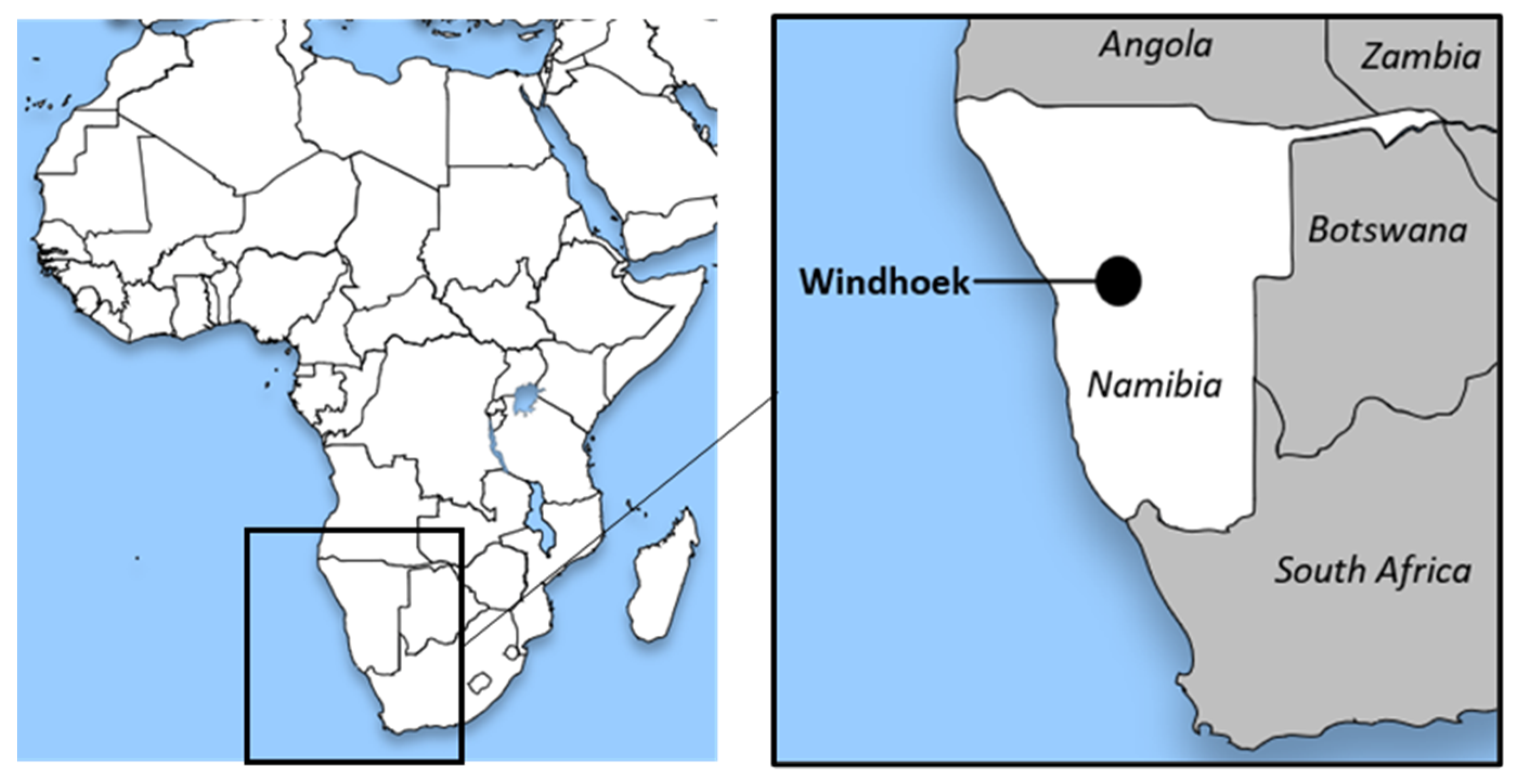
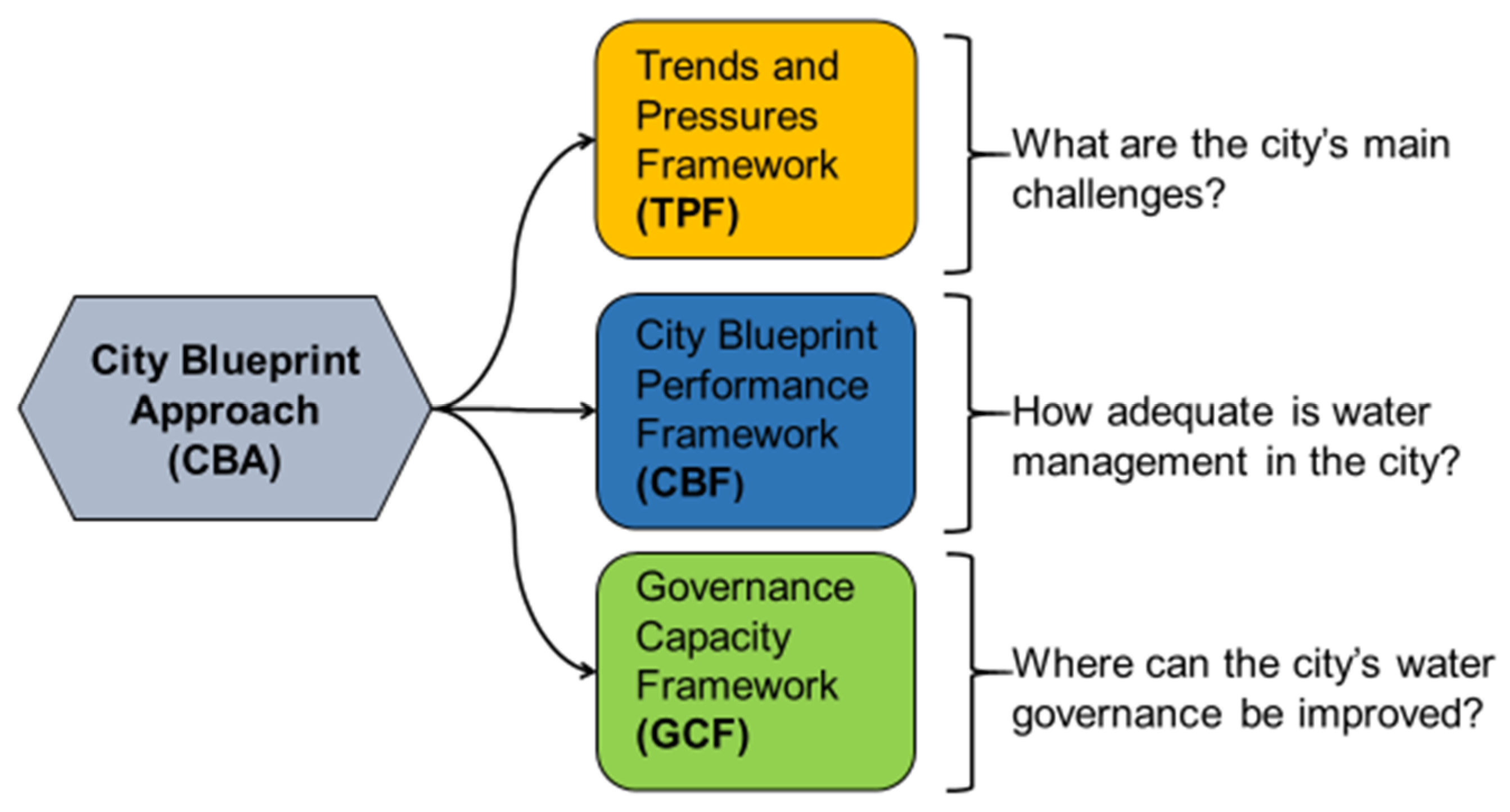
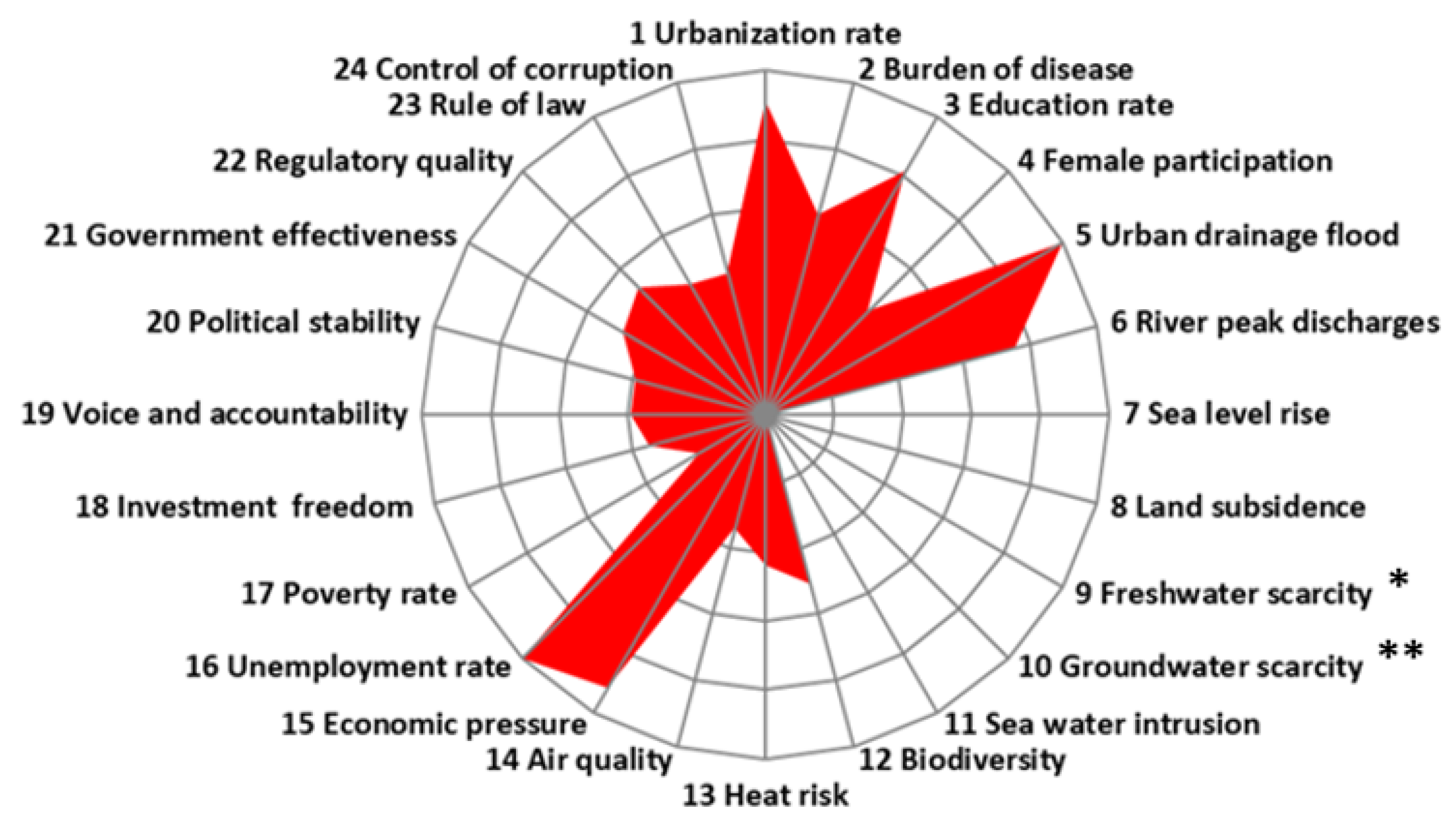
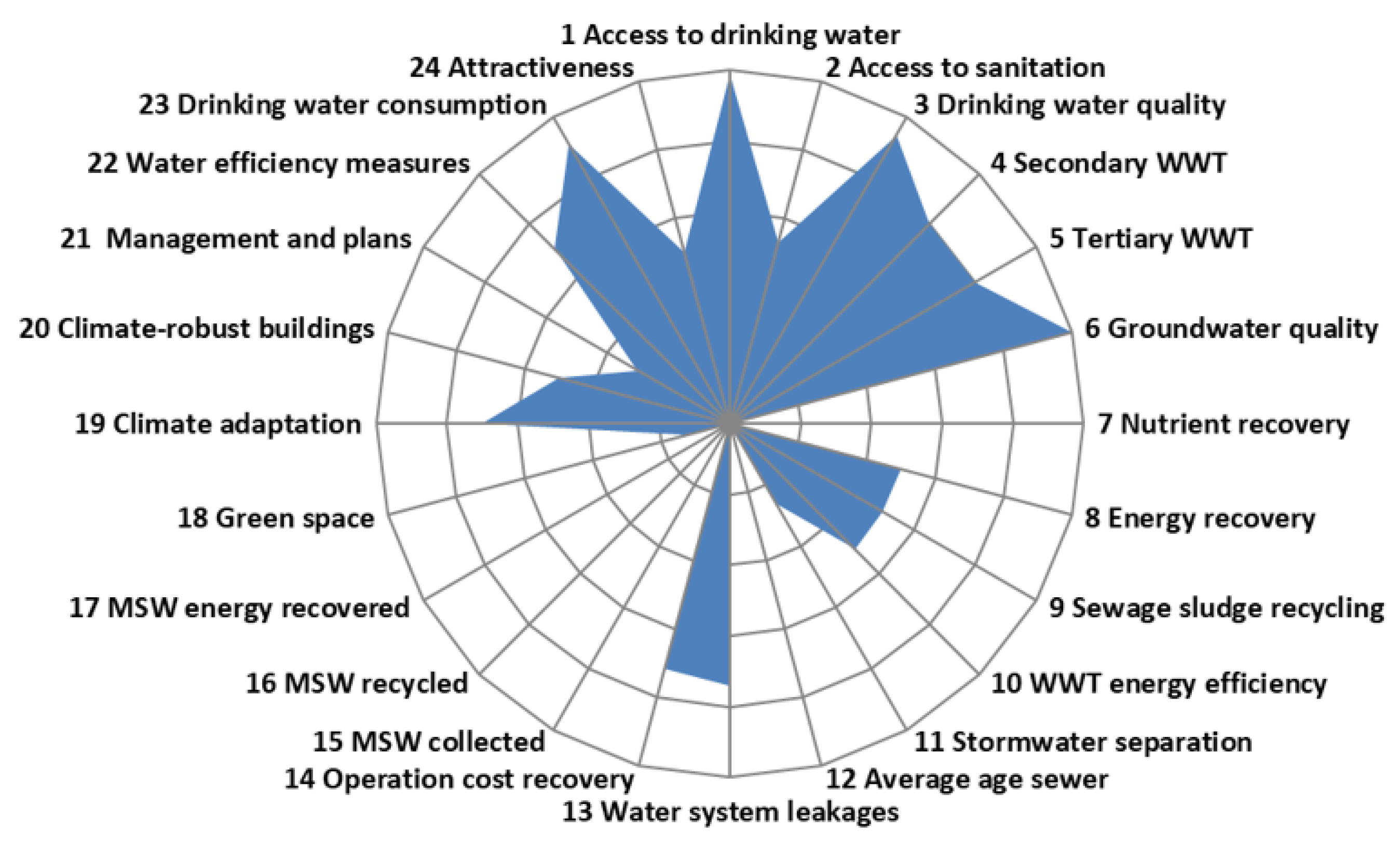
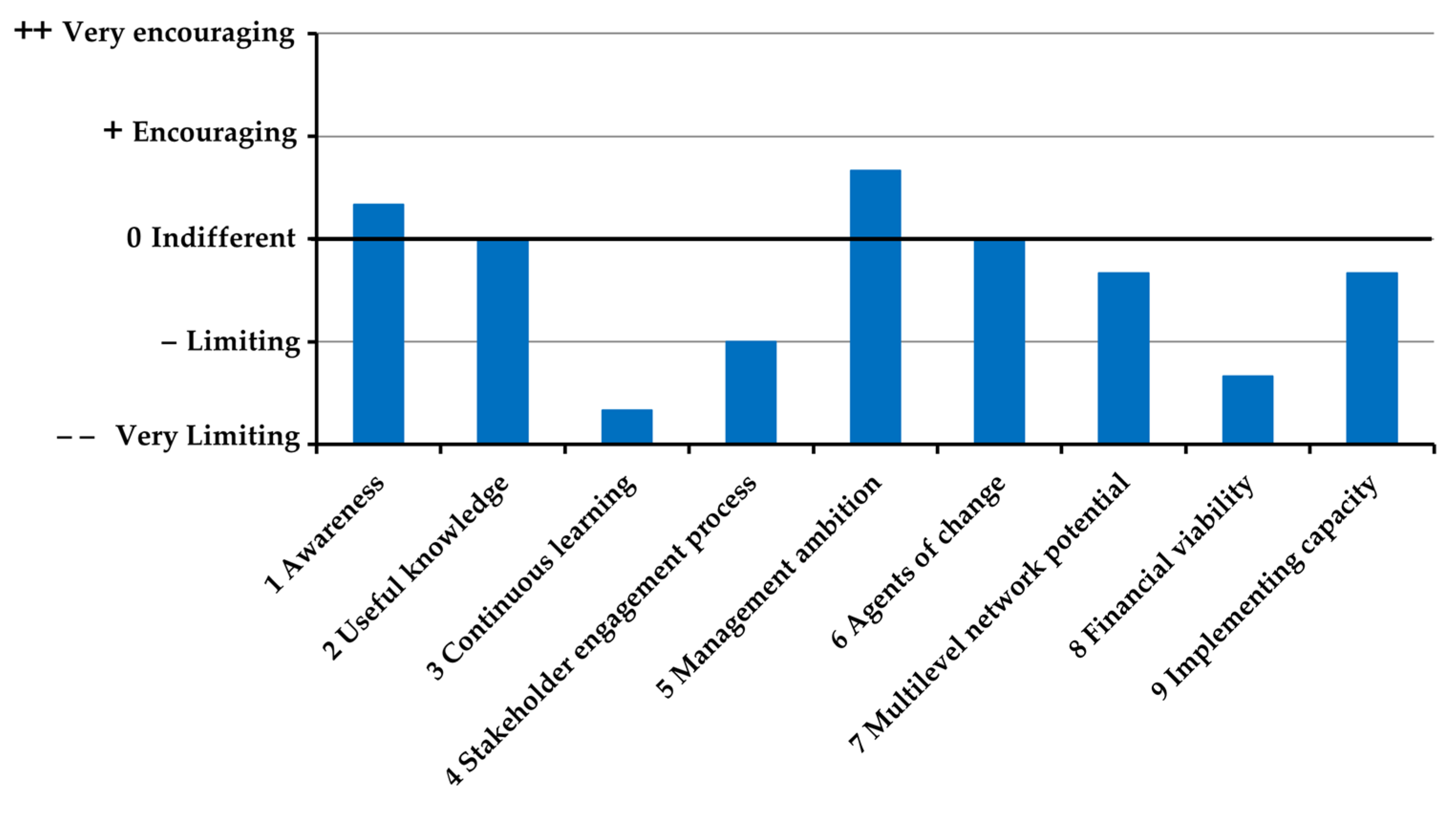
| Dimension | Condition | Indicator |
|---|---|---|
| Knowing |
| 1.1 Community Knowledge |
| 1.2 Local sense of urgency | ||
| 1.3 Behavioural internalisation | ||
| 2.1 Information availability | |
| 2.2 Information transparency | ||
| 2.3 Knowledge cohesion | ||
| 3.1 Smart monitoring | |
| 3.2 Evaluation | ||
| 3.3 Cross-stakeholder learning | ||
| Wanting |
| 4.1 Stakeholder inclusiveness |
| 4.2 Protection of core values | ||
| 4.3 Progress and variety of options | ||
| 5.1 Ambitious and realistic management | |
| 5.2 Discourse embedding | ||
| 5.3 Management cohesion | ||
| 6.1 Entrepreneurial agents | |
| 6.2 Collaborative agents | ||
| 6.3 Visionary agents | ||
| Enabling |
| 7.1 Room to manoeuvre |
| 7.2 Clear division of responsibility | ||
| 7.3 Authority | ||
| 8.1 Affordability | |
| 8.2 Consumer willingness-to-pay | ||
| 8.3 Financial continuation | ||
| 9.1 Policy instruments | |
| 9.2 Statutory compliance | ||
| 9.3 Preparedness |
Publisher’s Note: MDPI stays neutral with regard to jurisdictional claims in published maps and institutional affiliations. |
© 2022 by the authors. Licensee MDPI, Basel, Switzerland. This article is an open access article distributed under the terms and conditions of the Creative Commons Attribution (CC BY) license (https://creativecommons.org/licenses/by/4.0/).
Share and Cite
Olivieri, F.; Koop, S.H.A.; Van Leeuwen, K.; Hofman, J. Enhancing Governance Capacity to Ensure a Long-Term Water Supply: The Case of Windhoek, Namibia. Sustainability 2022, 14, 2387. https://doi.org/10.3390/su14042387
Olivieri F, Koop SHA, Van Leeuwen K, Hofman J. Enhancing Governance Capacity to Ensure a Long-Term Water Supply: The Case of Windhoek, Namibia. Sustainability. 2022; 14(4):2387. https://doi.org/10.3390/su14042387
Chicago/Turabian StyleOlivieri, Flavia, Steven Hendrik Andreas Koop, Kees Van Leeuwen, and Jan Hofman. 2022. "Enhancing Governance Capacity to Ensure a Long-Term Water Supply: The Case of Windhoek, Namibia" Sustainability 14, no. 4: 2387. https://doi.org/10.3390/su14042387
APA StyleOlivieri, F., Koop, S. H. A., Van Leeuwen, K., & Hofman, J. (2022). Enhancing Governance Capacity to Ensure a Long-Term Water Supply: The Case of Windhoek, Namibia. Sustainability, 14(4), 2387. https://doi.org/10.3390/su14042387





_van_Van_Leeuwen.png)


